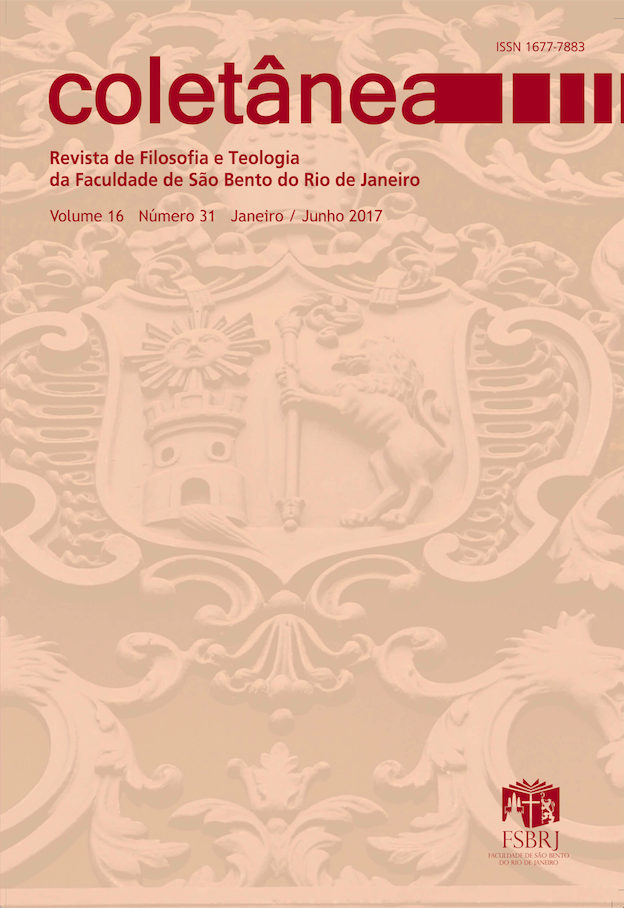A Mãe de Deus na tradição cristã etíope: uma leitura introdutória da Anáfora de Santa Maria de Abba Ciríaco de Behnesa
Resumo
Resumo: A figura da Virgem Maria possui um local central na teologia, liturgia e devoção dos cristãos afro-orientais, membros de antigas comunidades de origem apostólica, que insistiram sempre mais em seu caráter de Mãe de Deus como forma de enfatizar a união hipostática das Naturezas humana e divina na Pessoa de Jesus Cristo. Essa centralidade se expressa também na arte religiosa e em numerosos textos, entre os quais se incluem canções populares, poemas devotos, homilias comemorativas, tratados teológicos e coletâneas de milagres atribuídos à Virgem. Um dos mais impressionantes destes escritos é a Anáfora de Santa Maria, tradicionalmente atribuída a Abba Ciríaco (ou Heráclito) de Behnesa (el-Bahnasa ou Oxirrinco), utilizada na Divina Liturgia da Igreja Etíope algumas vezes por ano – nas mais importantes festas marianas, na véspera do Natal, na véspera e no dia da Anunciação e na comemoração do mesmo São Ciríaco. Como bem se sabe, a liturgia etíope deriva em larga medida da liturgia copta, em função da ligação milenar entre as Igrejas de Alexandria e da Abissínia, mas desenvolveu uma série de características originais a partir da absorção de elementos autóctones, do peso de sua herança semítica e de significativas influências siríacas. A Anáfora de Santa Maria de Abba Ciríaco de Behnesa é justamente uma das peças originais da Etiópia cristã, pois em nenhuma outra das liturgias hoje conhecidas preservou-se uma oração eucarística que faz menção à Virgem de modo tão específico. O objetivo deste artigo é, partindo de uma contextualização histórica, apresentar este texto e identificar como nela aparecefigurada a Mãe de Jesus.
Palavras-chave: Virgem Maria. Oração eucarística. História do cristianismo na África. Igreja Ortodoxa Etíope.
The Mother of God in the Ethiopian Christian Tradition: an introductory reading of the Anaphora of Santa Maria of Abba Ciriacus de Behnesa
Abstract: The figure of the Virgin Mary has a central place in the Theology, Liturgy and Devotion of the Afro-Eastern Christians, members of ancient communities of apostolic origin, who have insisted more and more on her character as Mother of God as a way of emphasizing the hypostatic union of human and divine Natures in the Person of Jesus Christ. This centrality is also expressed in religious art and in numerous texts, including popular songs, devotional poems, commemorative homilies, theological treatises and collections of miracles attributed to the Virgin. One of the most impressive of these writings is the Anaphora of Santa Maria, traditionally attributed to Abba Ciriacus (or Heraclitus) of Behnesa (el-Bahnasa or Oxirrinco), used in the Divine Liturgy of the Ethiopian Church a few times a year - in the most important Marian feasts, on the eve of Christmas, on the eve and day of the Annunciation, and in commemoration of the same Saint Ciriacus. As it is well known, the Ethiopian liturgy derives largely from the Coptic liturgy, owing to the millennial connection between the churches of Alexandria and Abyssinia, but has developed a series of original characteristics from the absorption of native elements, from the weight of their Semitic inheritance and of significant Syriac influences. The Anaphora of Santa Maria by Abba Ciriacus of Behnesa is precisely one of the original pieces of Christian Ethiopia, because in no other liturgy today is known a Eucharistic prayer that makes mention of the Virgin in such a specific way. The purpose of this article is, starting from a historical context, to present this text and identify how it appears in it, the Mother of Jesus.
Keywords: Virgin Mary. Eucharistic prayer. History of Christianity in Africa. Ethiopian Orthodox Church.
Downloads
Publicado
Edição
Seção
Licença
Os Autores mantêm os direitos autorais e ao mesmo tempo, concedem cessão dos mesmos direitos autorais à Revista Coletânea que passa ter plenos direitos de publicação, com o trabalho simultaneamente licenciado sob a Licença Creative Commons Attribution que permite o compartilhamento do trabalho com reconhecimento da autoria e publicação inicial nesta revista. As publicações deste periódico poderão ser reproduzidas desde que devidamente referenciadas, conforme a licença adotada.













